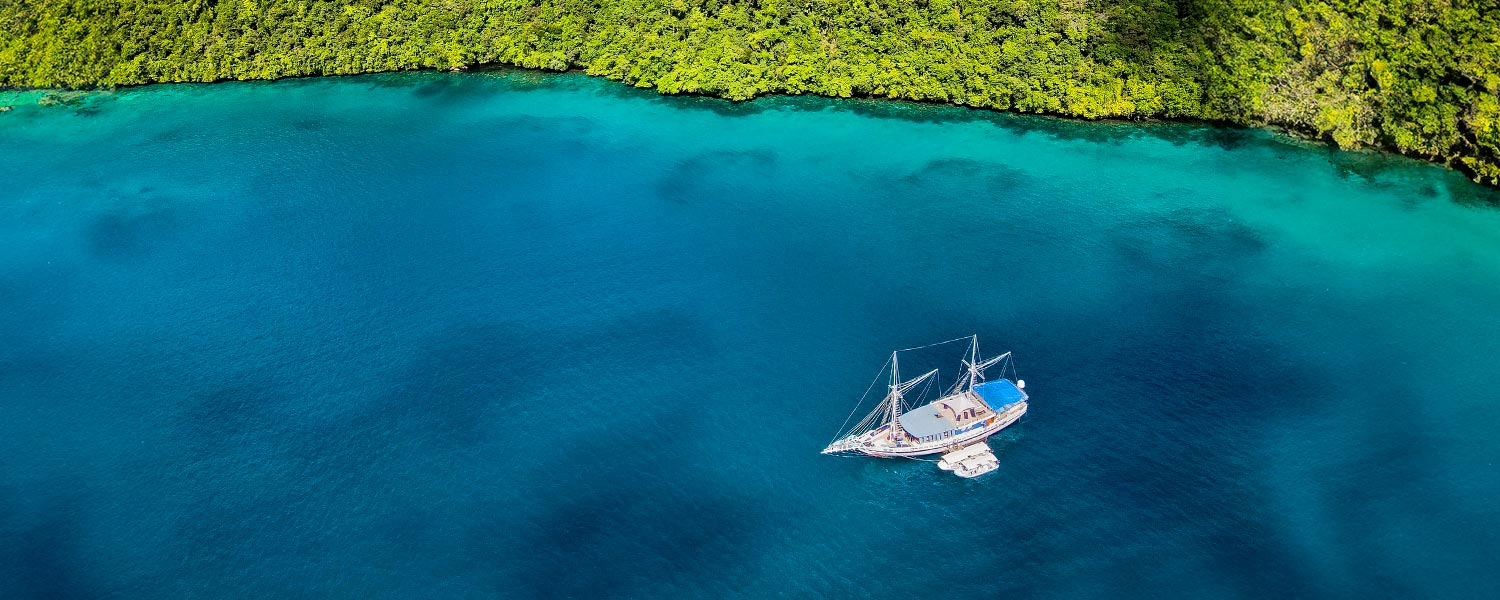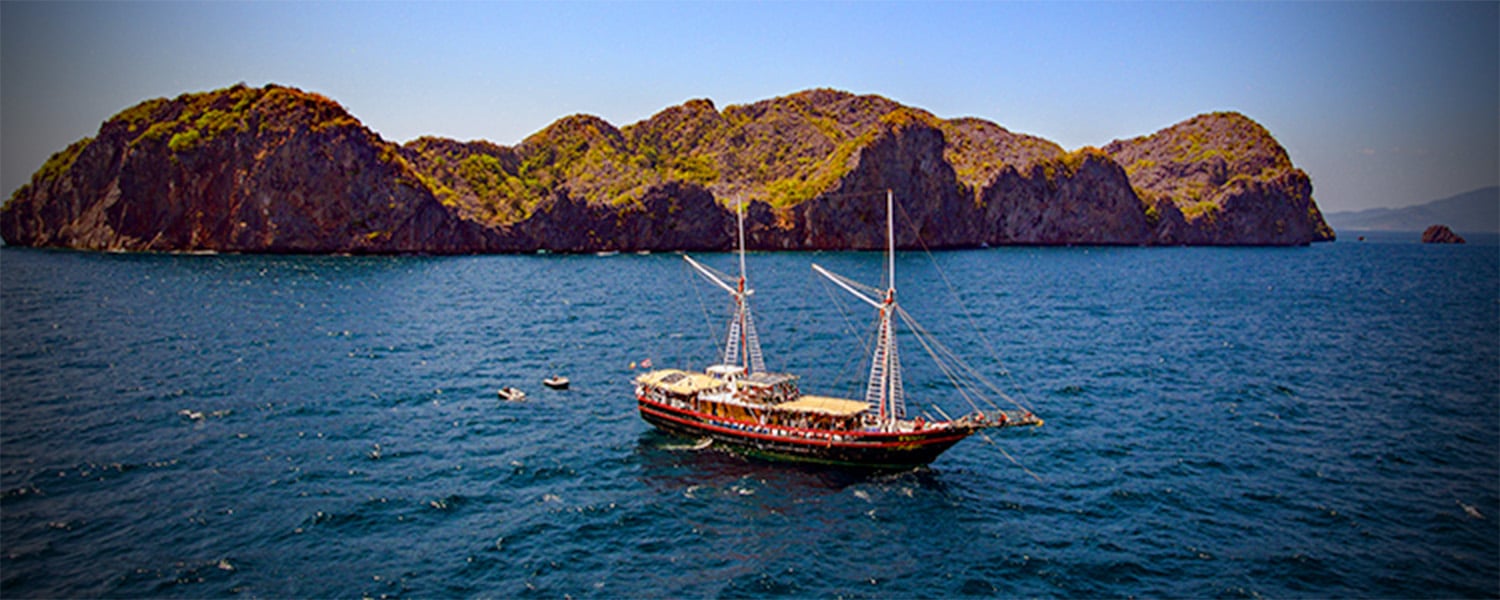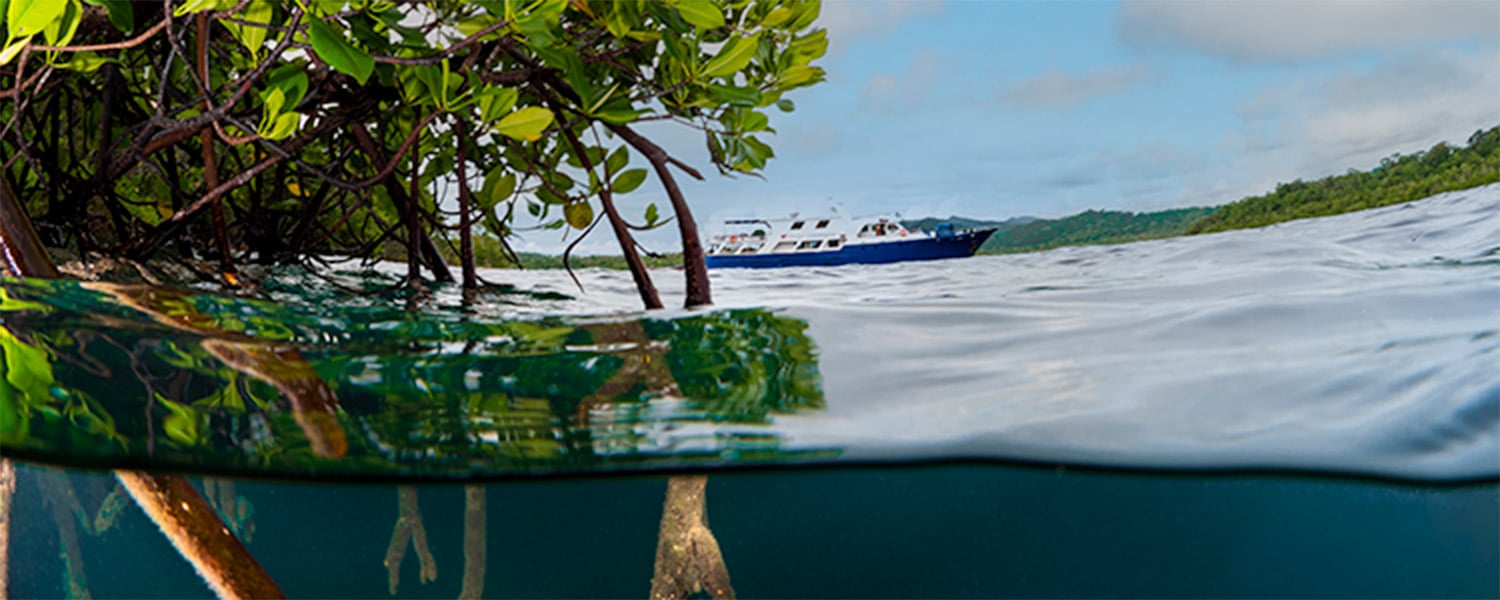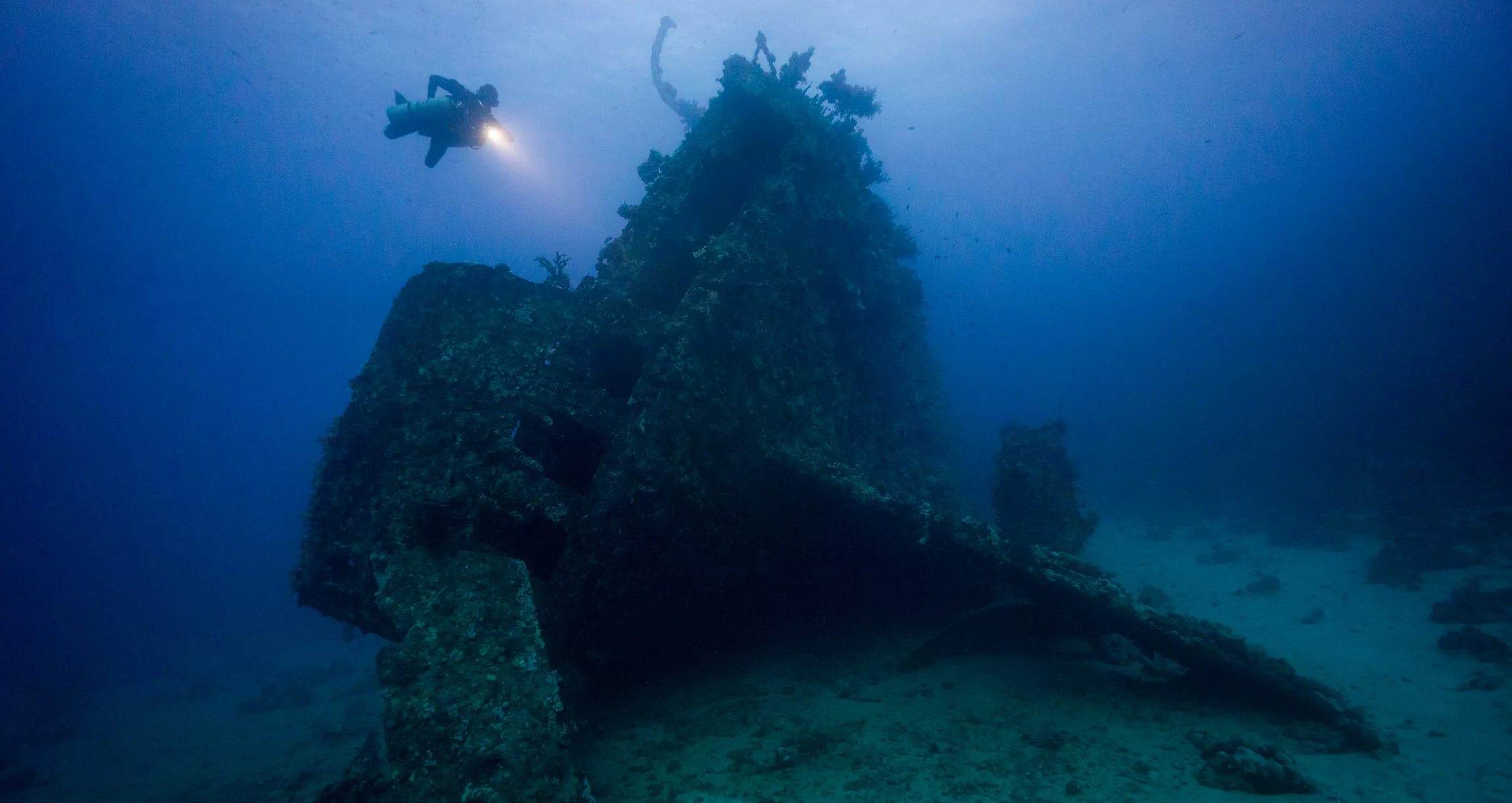Remote and truly beautiful, Solomon Islands is a diver’s dream destination. Part of the Coral Triangle, with a staggering diversity of marine species, coral, and dive sites, it somehow remains one of the least dived areas of the world. As the country is relatively new to tourism, The Solomons are often called ‘the South Pacific best kept secret’. The people who dive there themselves obviously know the place best. We asked Shaz Kozak to share her thoughts on the best dive sites in Solomon Islands. We asked for a top 5…
What a hard question! It is more like the best 25 dives in the Solomon Islands … there are so many that it is hard to pick just a few. The following are for sure, some of my most memorable!
Shaz Kozak – Solomon Islands Operations Manager
Leru Cut
No dive site list for Solomon Islands would be complete without including the amazing Leru Cut. It is one of the most iconic dives in the country and sought after by photographers everywhere.
Put simply it is probably the best of the best dive sites in Solomon Islands.
Located on Leru Island in the Eastern Russell Islands – this dive is only accessible by liveaboard. You enter the site outside the mouth of a chasm which cuts deep into the island. After a quick rendezvous at the surface, you descend to between 8 and 12m. Swimming single file into the chasm, divers shine their lights along the sheer walls. These walls drop from the surface to approximately 20m.
In the nooks and crannies it’s fun to hunt for nudibranchs, small octopus, and flame scallops. But, the real beauty of the dive is the play of light on the walls. This dive is done between 11am and 2pm for best effect. This is because the direct overhead sun creates a kaleidoscope of light beams in the narrow channel.

As you reach the end of the chasm (approximately 100m of swimming), you surface to the most incredible view! The chasm ends in the middle of the jungle where you can hear the frogs calling. The feeling is so reverent that divers almost always whisper their amazement at the view.
After floating in the jungle for a while you begin your descent back into the cut. This time you will almost touch bottom at 20m, as you make your way back out of the chasm. Near the end, look for a small cave where a large group of spiny rock lobsters live. A number of sea fans also mark the chasm mouth and it is not unusual to find tiny pygmy seahorses among the fronds.
A photographers dream
Photographers often choose to spend their entire dive in the chasm. They can explore the play of light and dark, but the wall on the outside should not be missed. Dropping down into the depths, we see reef sharks, turtles, and schools of oceanic triggerfish patrolling the blue.
Along the wall are several plateaus which are home to a massive variety of anemonefish. Near the end of the dive, one of these plateaus is home to 8 of the 9 species of anemonefish found in the Solomons. We have also seen rock mover wrasse, tiny moray eels, and crocodile fish along the wall.
Maravagi Village
Set in the idyllic Florida (Ngella) Islands, this village is home to almost 600 Solomon Islanders. From the boat however, it looks like a small abandoned encampment. We moor in the bay on a permanent mooring line set up with the village chief’s permission. This village understands the need for conservation and has worked with us to ensure their coral gardens are protected. A simple giant stride entry off the back of the boat takes you to three different dive sites.
Three dive sites in one
To the north, is a small wall complete with two abandoned wrecks. Both of these are home to thousands of glassfish, anthias, and damsels. Along the wall is a sandy channel which reaches out to the blue. At 30m or so you can find a small field of sapsucker slugs – a very unusual treat.
To the east is another dive – a beautiful coral garden. In the shallows, you may be lucky enough to see the resident school of bream. As you move along the shore line there are huge giant clams a full arms width in length. Then, if you look among the rubble, you can find the entrance to several peacock mantis shrimp dens. The patient diver can have a fun interaction with them. The highlight of this portion of the reef though is the high probability of seeing cuttlefish. We have seen up to 9 at a time schooling together.

Finally, a short skiff ride away is Devil’s Highway, home to a small resident colony of giant manta rays. This site is washed by very strong currents and so is not available on every trip. A little serendipity is required as the tides, moon phase, and weather all need to be in alignment. But, when we can dive it, it is amazing. You can hook onto the corner and watch the mantas jump, leap, and feed at the surface. At the end of the dive, simply release your hook and let the current bring you back into Maravagi Bay.
Kavachi Corner
Located in the western province, off Kitcha Island, this site is generally only available on our Best of Solomons or Guadalcanal to Western Province itineraries. A sheer deep wall, with plateaus that push out into the blue, offers the opportunity for awesome marine life sightings. Grey reef sharks, rainbow runners, barracuda, and midnight snappers, along with a large school of bumphead parrotfish are regular visitors.

As you round the corner, you may hear a loud BOOM which will have you checking your pulse! Try and remain calm, the noise is 25km away, although it is an active volcano. The Kavachi volcano is the most active marine volcano on the planet and is fighting to become an island. Kavachi Corner catches the sound and provides a percussive background while you dive.
As you shallow up, check out the amazing gorgonian fans, some up to 10m across. Finally, as you finish in the shallows, look for flame angelfish, Meyers butterfly fish, and nesting titan triggerfish.
Taiyo Fishing Boat
This site has a number of names, depending who you talk to. Some call it The Nono, as it is located in Nono Lagoon, the Taiyo (Solomon’s word for Tuna, which is what it was fishing for when it went down) or the Upright Wreck as it now sits nearly vertical on the reef.
On its maiden voyage, this 300-foot fishing boat ran aground after striking a coral reef in Nono Lagoon. An attempt to salvage the ship went awry, and caused the Taiyo to sink bow to stern over the reef edge. Its bow sits just a few feet below the lagoon’s surface and, for now at least, the ship remains fully intact.
It is perhaps one of the most picturesque wrecks in the world. Its unique position on the reef makes it a sight to behold.
Mbulo Island, Cathedral
The Cathedral is located near Peava Village on Mbulo Island. This area, incidentally, is home to some of the most amazing wood carvers in the Solomon Islands and a wonderful garden market. This dive is simply the best show of hard coral gardens in the world. Its also home to an amazing amount of biodiversity. Cathedral is a shining example of what can be seen on the best dive sites in Solomon Islands.

This meandering series of cracks, crevices, and caverns offers the opportunity for swim throughs among the shallows. Add in some bright sunlight, and you’ll find yourself bathed in dancing, darting rays.
There are four unique caverns, of varying sizes, and the intensity and direction of the light rays will alter notably as you pass through. With an hour plus to play with, be sure to keep moving so you can explore each cavern properly. This will also give your fellow divers lots of opportunity to view and photograph each area.

The final cavern is aptly named the Cathedral. Named as Mother Nature has carved out an underwater church complete with a central altar.
Visit the best dive sites in Solomon Islands
These are just five of the best dive sites in Solomon Islands. There are many more and you can explore them before everyone else! Book your trip today for a once in a lifetime liveaboard dive trip aboard Solomons Master!



